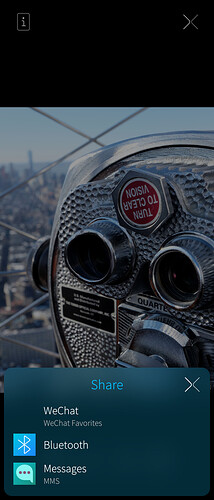This does never delete any user data & configuration! I only deletes system configuration/data (See also my other post here Deleting app does not delete (user) data)
Sure you are right. There is only one safe way to let developers clear the configuration files. Otherwise you have to search in /etc, /home, /opt and elsewhere yourself.
The suggestion from the internet is unsuccessful. My uninstallation experiences with “synaptic” on a Debian system rarely work. It’s just theory. I gave up looking for a solution a long time ago.
so we are talking a that this is a huge problem of Linux, where we cant delete the data so it can be track ?
why android can do it then when it is a linux kernel?
Not the Linux Kernel is the problem, but the packaging of the Apps. While Sailfish uses RPM (but it would be the same with AUR, deb, etc), Android uses a completely different concept for apps.
ookay!! hope that that will change it is important that we like users have the control of what we need to delete and what we wanna keep, and it has to be in a easy way, where you dont need to be master IT class for doing it.
I don’t know of any operating system that fulfills this requirement. We can only remind the developers to delete all data when uninstalling.
In Android this would be clear cache and clear userdata in settings → Apps → [appname] → Storage.
EDIT: What I think of: Jolla should provide a coding guide for this task, roughly like:
- “put the config here”
- “put the cache there”
- provide a qml plugin and sample code, which deletes these files/dirs.
- provide a design principle, where to put the buttons for triggering the deletion.
…this could also obviously be used to reset an app.
There is a standard which governs this (the XDG, X Desktop Guidelines at https://specifications.freedesktop.org), and Jolla has some guidelines in that regard.
The two paths you mention would be ~/.config/harbour-foo, and ~/.cache/harbour-foo, and then there is ~/.local which has some different semantics (it basically works like /usr or /usr/local but for the user).
There is also
- Silica StandardPaths
- QML StandardPaths Type
- Qt QStandardPaths Class
- Python PyStandardPaths
which allow developers convenient handling of these standard locations.
If apps follow that (and even if they don’t), they are free to provide an option inside the app to remove whatever they create.
As has been mentioned, it is not the domain of a package manager to delete these kinds of data, package managers should not do this and what some here request would be Very Bad Practice.
Now, one could argue that there should be an OS function or App to clean out these locations, similar to the mentioned Android functionality, but I for one am strictly against this happening automatically.
I like that my settings and other data persist between me installing and uninstalling apps, and if I really want everything gone I can use the factory reset, or manually delete things.
But even such an application would rely on the individual developers adhering to the aforementioned standards (or really, any other as long as it’s the same), and currently there is little which forces one to do so.
One can’t stress this enough. It’s strange coming up with such ideas.
I don’t think this is possible in SailfishOS in it’s current state. I just mentioned Android as an answer to the statement of the posting before.
I agree with everything you wrote. Just two things to add:
- You can’t delete files from qml-only → hence a plugin may be needed.
- Jolla should mention this in coding guides like they write aboout things like using CamelCase… “You should provide a function to the user deleting app generated data.” followed by best practice.
What could be done on the OS level, is an option to reset just /home/{nemo,defaultuser} to factory settings, leaving everything else intact. A kind of soft-factory-reset.
Right now, deleting the defaultuser’s home or the wrong parts thereof will horribly break things AFAIK.
That would be trivial to implement too, about a five-line shell script.
Thinking about it, where does the initial layout of /home/nemo come from? Is that just the partition stored in the flashable image, or does it get set up on initial boot? jolla-startupwizard? All of those?
Thinking about it, where does the initial layout of
/home/nemocome from?
Maybe one can investigate it by setting up a new additional user.
Thinking about it, where does the initial layout of
/home/nemocome from? Is that just the partition stored in the flashable image, or does it get set up on initial boot?jolla-startupwizard? All of those?
My guess is /etc/skel/ like in all the Linux systems I have used in the past. At least that path exists in SFOS and there are some profile-files already in it.
I have the same problem deleting data from an account so that I can reinstall an app using a new account. Is there a solution from Terminal using cd to .config and using rm to delete the directory from there?
just want to back Mashka. it gives you a pretty good and not-nerd-friendly overview and handling of your user data.
